Gladiator dropped in 2000 — that’s over two decades ago. Ridley Scott directed the film, and Russell Crowe went full beast mode as Maximus. Joaquin Phoenix absolutely nailed it playing a sniveling, power-hungry Commodus stans. You also have Connie Nielsen, Oliver Reed, and Djimon Hounsou rounding out the cast.
This movie didn’t just bring swords and shields back, it straight-up kicked the door down for all those ancient epics you saw in the 2000s. Studios saw Gladiator raking in nearly half a billion bucks (on a $103 million budget) and winning five Oscars, including Best Picture and Best Actor.
Gladiator has memorable lines — most notably, “Are you not entertained?” The film also has iconic scenes and, importantly, staying power.
Plot-wise, Gladiator drops you right in Rome around 180 AD. The main fella, Maximus Decimus Meridius, is a respected Roman general. He shares a strong bond with Emperor Marcus Aurelius, who is old, wise, and not long for this world. Instead of handing the crown to his son Commodus, Marcus wants Maximus to take over after him, and hand power back to the Senate so that Rome once again becomes a Republic.
Consumed by jealousy and ambition, Commodus secretly kills his father, grabs the throne, and orders Maximus and his family wiped out. Maximus barely dodges death, but when he gets home, he finds his wife and kid gone in the worst way possible. Shattered emotionally, he is rounded up and sold as a slave to an ex-gladiator, Proximo, who now trains slaves for the arena.
Maximus starts fighting in the arena, and they start calling him the Spaniard. He ends up in Rome itself, where Commodus has organized elaborate games to win public favor. But Maximus becomes super popular, which upsets Commodus.
Eventually, it all explodes in an epic gladiator showdown. Maximus kills Commodus, but is fatally wounded. He dies, but not for nothing — the Republic gets its shot at a comeback.
The movie is more than just sword fights and revenge. It digs into heavy stuff like what it means to leave a legacy, how power can rot people from the inside, and just how stubborn the human spirit can be, even when everything has gone sideways.
Gladiator might seem like a big, sweeping action flick at first glance, but there is way more under the hood than you would think. This movie is packed with sneaky details, clever historical winks, and a bunch of wild backstage stories most folks might miss.
We have rounded up 10 of the coolest hidden gems, plus a bit of backstory so you know what’s up.
10 hidden details in Gladiator you probably missed
The historical parallels of Commodus

Commodus, Joaquin Phoenix’s character, is not just some made-up bad guy for Hollywood flair. The real man was actually kind of a disaster. He fought as a gladiator, loved making everything about himself, and was just awful to people.
The whole stabbing-Maximus-in-the-side thing in the movie is not just for drama — Commodus actually had a nasty habit of shanking opponents before a fight to get the upper hand.
Also, he renamed Rome after himself. Plus, he made the government pay him ridiculous sums just to watch him strut around in the arena. No wonder the empire started to decline with him at the helm.
The real tigers in the arena
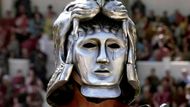
Remember the showdown between Maximus and Tigris of Gaul? Ridley Scott wasn’t messing around with CGI cats — the guy brought in five real tigers. There was a professional handler nearby with tranquilizer darts, just in case things went downhill.
Supposedly, they were dead set on keeping the tigers at least 15 feet from Russell Crowe. At one point, a tiger got too close — barely two feet away — and took a swipe at him. Instead of freaking out, they just left the shot in the movie!
Maximus’s tattoo: SPQR
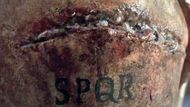
Maximus has an SPQR tattoo inked right on his left shoulder. It’s not a random scribble; it actually means, “The Senate and People of Rome.”
Back in the day, you would spot those letters everywhere — banners, coins, etc. It was almost like the Roman Empire’s personal brand. Anyway, seeing that on Maximus means that this guy bleeds Rome. Even when he is down in the dirt or shackled up, you know where his heart’s at.
Bread and circuses: A nod to Roman decadence
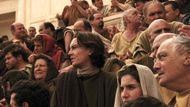
In the movie, you have bread flying all over the Colosseum like it’s some kind of ancient food fight. This is classic “bread and circuses” in action.
The Romans tossed out free grain and wild shows just to keep people chill and distracted while the bigwigs pulled their political shenanigans. The filmmakers leaned into that, throwing a little shade at how the crowds were bought off with carbs and chaos. It is a pretty savage dig at how Rome kept people happy (or, you know, docile) with handouts and flashy distractions.
Improvised and ad-libbed lines
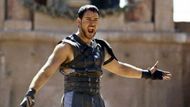
Some of the best bits in Gladiator weren’t even in the script. Russell Crowe went off-script with that line about his house: " A house in the hills with stones that warm in the sun.” It was straight from his memories back in Australia.
And that “Are you not entertained?” outburst? That's also an improv. He just let loose, and it became an instant classic.
Oliver Reed’s final performance
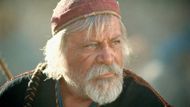
Oliver Reed (who played Proximo) died three weeks before they wrapped filming. The guy was a pretty big deal in the movie, too, so they couldn’t just write him out. What did they do? Well, they got creative using body doubles and CGI magic, just to stitch together his last scenes.
Gladiator ended up breaking ground in Hollywood for that digital wizardry. Reed’s last performance has a bittersweet vibe, knowing it was his final bow.
The Colosseum: A digital and practical marvel
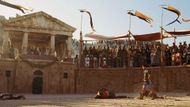
The Roman Colosseum in Gladiator is an absolute showstopper. They didn’t build the whole thing. Only a chunk of the arena was real, and the rest was early-2000s CGI. Back then, the digital trickery was hectic.
The crew dug into old blueprints and whatever archaeologists could dig up (pun intended) to nail the look. It paid off, and it is probably the most legit version of ancient Rome you’ll ever see. After that, every other historical epic pretty much had to level up.
The Battle of Germania: Filmed in Surrey

That first big battle in Germania was not shot anywhere near Germany. They filmed it in Bourne Wood, Surrey, a fancy bit of English forest.
Apparently, the crew got the green light to torch part of the woods for those epic scenes. Real fire, real smoke, and no CGI forests here. The location has featured in a bunch of blockbusters since then, but nothing tops Gladiator.
The meaning of “Strength and Honor”
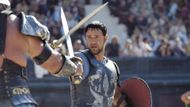
“Strength and Honor” — that’s the battle cry Maximus and his crew toss around in Gladiator. It is not plucked straight out of ancient Roman textbooks or anything, but it nails that whole Roman soldier ethos: tough, loyal, all about respect.
Maximus lives and breathes those words, which is probably why the phrase stuck so hard with fans. These days, if you hear someone shout “Strength and Honor,” the odds are they are quoting the movie, not brushing up on their Latin grammar.
Maximus’s death scene: A subtle comfort for the hero
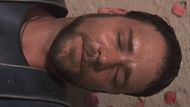
That big, teary moment at the end of Gladiator — when Maximus finally dies after taking out Commodus in the Colosseum. If you have a sharp eye, you will spot a tidy little pile of sand under Maximus’s head.
First time Lucilla runs over, Crowe’s head is flat on the ground, as one would expect for a character who has just collapsed. A few shots later, he has a sand pillow propping him up.
When the honor guard scoops him up, the sand’s still keeping his head nice and comfy. Clearly, somebody off-camera made sure Russell Crowe didn’t have to eat dirt in his big death scene.
It’s a tiny thing, and you’d probably miss it if you weren’t paying close attention.
Love movies? Try our Box Office Game and Movie Grid Game to test your film knowledge and have some fun!
